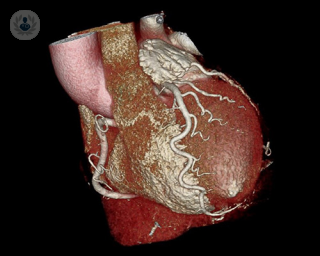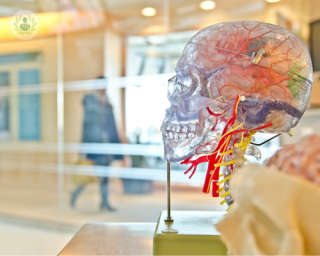High cholesterol
Dr Abbi Lulsegged - Internal medicine
Created on: 09-22-2015
Updated on: 09-19-2023
Edited by: Sophie Kennedy
What is high cholesterol (dyslipidaemia)?
Dyslipidaemia is the increase in cholesterol or triglycerides in the blood, or a decrease in high-density lipoproteins (which can lead to atherosclerosis). The increase in the presence of cholesterol, if combined with some other lipid and metabolic irregularities, can lead to the development of increased cardiovascular risk.
Dyslipidaemias can be classified as follows:
- Hypercholesterolemia (high cholesterol)
- Hypertriglyceridemia (increased triglycerides)
- Hyperlipidaemia (increase in cholesterol and triglycerides)

Symptoms of dyslipidaemia
Dyslipidaemias are generally asymptomatic and are diagnosed when another symptom or condition is being investigated. If dyslipidaemia is more severe and has led to arterial diseases, then the following symptoms may be experienced as a result:
- Chest pain
- Shortness of breath
- Leg pain
- Heart palpitations
- Difficulty sleeping
How is dyslipidaemia diagnosed?
To diagnose dyslipidaemia, blood tests are carried out to assess the levels of triglycerides and cholesterol in the blood. It may also be necessary to measure glucose, TSH (or thyroid-stimulating hormone) and urine protein level.
What are the causes of dyslipidaemia?
The causes of dyslipidaemia are of two types:
Primary (or genetic)
A genetic dysfunction generates an excessive or insufficient production of cholesterol and triglycerides.
Secondary
These are often linked to lifestyle choices, such as smoking and excessive intake of foods rich in cholesterol and trans fats. However, dyslipidaemias may also be related to diabetes, kidney and liver diseases or hypothyroidism.
Can dyslipidaemias be prevented?
Prevention consists of leading a healthy lifestyle. If you’ve been diagnosed with a dyslipidaemia, you will likely be given the following advice to improve your condition:
- Eat more fibre and complex carbohydrates
- Reduce the consumption of cholesterol and saturated fats
- Exercise regularly
- Maintain a healthy weight
Treatments for dyslipidaemia
If a patient’s dyslipidaemia is a result of another condition, such as diabetes, then this will be managed first. Patients may also be given certain medications that can help to lower the levels of lipids in the blood.
What specialist treats dyslipidaemias?
If dyslipidaemia is suspected, a nutritionist or dietician can help diagnose this. Additionally, blood tests requested by a GP can also confirm this. If the patient suffers from diabetes, for example, an endocrinologist can help to manage their dyslipidaemia.








